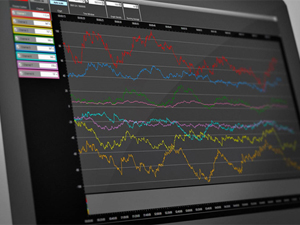



Date:22/06/16
 UT Dallas researchers have designed an affordable “electronic nose” radio-frequency front end for a rotational spectrometer — used for detecting chemical molecules in human breath for health diagnosis.
UT Dallas researchers have designed an affordable “electronic nose” radio-frequency front end for a rotational spectrometer — used for detecting chemical molecules in human breath for health diagnosis.
Current breath-analysis devices are bulky and too costly for commercial use, said Kenneth O, PhD, a principal investigator of the effort and director of Texas Analog Center of Excellence (TxACE). Instead, the researchers used CMOS integrated circuits technology, which promises to make the device compact and affordable.
A rotational spectrometer generates and transmits electromagnetic waves over a wide range of frequencies, and analyzes how the waves are attenuated (absorbed) to determine what chemicals are present, as well as their concentrations in a sample. The system can detect low levels of chemicals present in human breath.
A breath test contains information about practically every part of a human body, but an electronic nose can detect gas molecules with more specificity and sensitivity than breathalyzers, which can confuse acetone for ethanol (the active ingredient of alcoholic drinks) in the breath, for example. This is important for patients with Type 1 diabetes, who have high concentrations of acetone in their breath. The current research focuses on the design of a 200–280 GHz transmitter radio-frequency front end.
The researchers envision that the CMOS-based device will first be used in industrial settings, and then in doctors’ offices and hospitals. As the technology matures, the devices could be used in homes. Dr. O said the need for blood work and gastrointestinal tests, for example, could be reduced, and diseases could be detected earlier, lowering the costs of health care.
The researchers plan to have a prototype programmable electronic nose available for beta testing in early 2018.
The research is supported by the Semiconductor Research Corporation, Texas Instruments, and Samsung Global Research Outreach. The research team includes members at UT Southwestern, Ohio State University, and Wright State University.
The research was presented Wednesday in an open-access paperat the 2016 IEEE Symposia on VLSI Technology and Circuits in Honolulu, Hawaii.
‘Electronic Nose’ may be the next everyday health diagnosis device
 UT Dallas researchers have designed an affordable “electronic nose” radio-frequency front end for a rotational spectrometer — used for detecting chemical molecules in human breath for health diagnosis.
UT Dallas researchers have designed an affordable “electronic nose” radio-frequency front end for a rotational spectrometer — used for detecting chemical molecules in human breath for health diagnosis.Current breath-analysis devices are bulky and too costly for commercial use, said Kenneth O, PhD, a principal investigator of the effort and director of Texas Analog Center of Excellence (TxACE). Instead, the researchers used CMOS integrated circuits technology, which promises to make the device compact and affordable.
A rotational spectrometer generates and transmits electromagnetic waves over a wide range of frequencies, and analyzes how the waves are attenuated (absorbed) to determine what chemicals are present, as well as their concentrations in a sample. The system can detect low levels of chemicals present in human breath.
A breath test contains information about practically every part of a human body, but an electronic nose can detect gas molecules with more specificity and sensitivity than breathalyzers, which can confuse acetone for ethanol (the active ingredient of alcoholic drinks) in the breath, for example. This is important for patients with Type 1 diabetes, who have high concentrations of acetone in their breath. The current research focuses on the design of a 200–280 GHz transmitter radio-frequency front end.
The researchers envision that the CMOS-based device will first be used in industrial settings, and then in doctors’ offices and hospitals. As the technology matures, the devices could be used in homes. Dr. O said the need for blood work and gastrointestinal tests, for example, could be reduced, and diseases could be detected earlier, lowering the costs of health care.
The researchers plan to have a prototype programmable electronic nose available for beta testing in early 2018.
The research is supported by the Semiconductor Research Corporation, Texas Instruments, and Samsung Global Research Outreach. The research team includes members at UT Southwestern, Ohio State University, and Wright State University.
The research was presented Wednesday in an open-access paperat the 2016 IEEE Symposia on VLSI Technology and Circuits in Honolulu, Hawaii.
Views: 525
©ictnews.az. All rights reserved.Similar news
- Azerbaijani project to monitor disease via mobile phones
- Innovative educational system to be improved under presidential decree
- NTRC prolongs license of two TV and radio organizations for 6 years
- Azerbaijan establishes e-registry for medicines
- Azerbaijani museum introduces e-guide
- Nar Mobile opens “Nar Dunyasi” sales and service center in Siyazan city
- International conference on custom electronic services held in Baku
- OIC secretary general to attend COMSTECH meeting in Baku
- Azerbaijan develops earthquake warning system
- New law to regulate transition to digital broadcasting in Azerbaijan
- Azerbaijani State Social Protection Fund introduces electronic digital signature
- Intellectual traffic management system in Baku to be commissioned in December
- Tax Ministry of Azerbaijan started receiving video-addresses
- World Bank recommends Azerbaijan to speed up e-service introduction in real estate
- Azerbaijan to shift to electronic registration of real estate





















